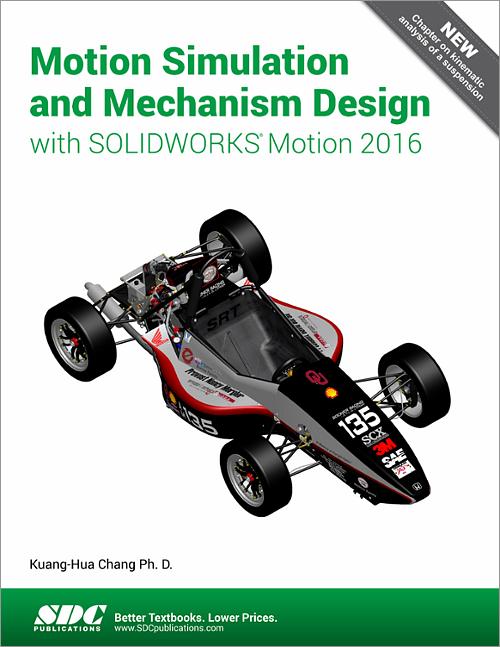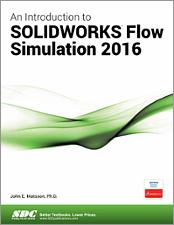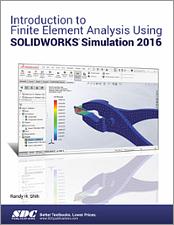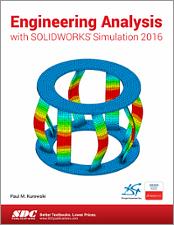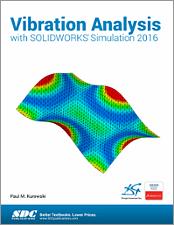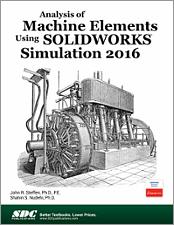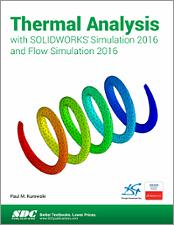Motion Simulation and Mechanism Design with SOLIDWORKS Motion 2016
- Description
- Contents
- Downloads
- Details
Description
Key Features
- Covers the basic concepts to advance from novice to intermediate SOLIDWORKS Motion user
- Concepts are introduced using simple, yet realistic results
- Simulation results are verified with those obtained from theoretical results
- Features a new chapter on kinematic analysis of a racecar suspension
In Detail
Motion Simulation and Mechanism Design with SOLIDWORKS Motion 2016 is written to help you become familiar with SOLIDWORKS Motion, an add-on module of the SOLIDWORKS software family. This book covers the basic concepts and frequently used commands required to advance readers from a novice to intermediate level in using SOLIDWORKS Motion.
SOLIDWORKS Motion allows you to use solid models created in SOLIDWORKS to simulate and visualize mechanism motion and performance. Using SOLIDWORKS Motion early in the product development stage could prevent costly redesign due to design defects found in the physical testing phase. Therefore, using SOLIDWORKS Motion contributes to a more cost effective, reliable, and efficient product design process.
Basic concepts discussed in this book include model generation, such as creating assembly mates for proper motion; carrying out simulation and animation; and visualizing simulation results, such as graphs and spreadsheet data. These concepts are introduced using simple, yet realistic examples.
Verifying the results obtained from the computer simulation is extremely important. One of the unique features of this book is the incorporation of theoretical discussions for kinematic and dynamic analyses in conjunction with the simulation results obtained using SOLIDWORKS Motion. Verifying the simulation results will increase your confidence in using the software and prevent you from being fooled by erroneous simulations.
This book covers the following functionality of SOLIDWORKS Motion 2016:
- Model generation
- Creating assembly mates
- Performing simulations
- Creating animations
- Visualizing simulation results
Table of Contents
- Introduction to SOLIDWORKS Motion
- Animation and Basic Motion - A Single Piston Engine Example
- A Ball Throwing Example
- A Simple Pendulum
- A Spring Mass System
- A Slider-Crank Mechanism
- A Rail-Carriage Example
- A Compound Spur Gear Train
- Cam and Follower Appendix A: Defining JointsAppendix B: The Unit SystemsAppendix C: Importing Pro/ENGINEER Parts and Assemblies
Downloads
For additional information on downloading, unzipping, and using these files visit the downloads section on our FAQ page.
Product Details
| Publisher | SDC Publications |
| Authors | Kuang-Hua Chang Ph.D. |
| Published | June 13, 2016 |
| User Level | Beginner - Intermediate |
| Pages | 152 |
| Binding | Paperback |
| Printing | Black and White |
| Print ISBN | 978-1-63057-053-8 |
| Print ISBN 10 | 1630570532 |
| eBook ISBN | 978-1-63056-314-1 |
